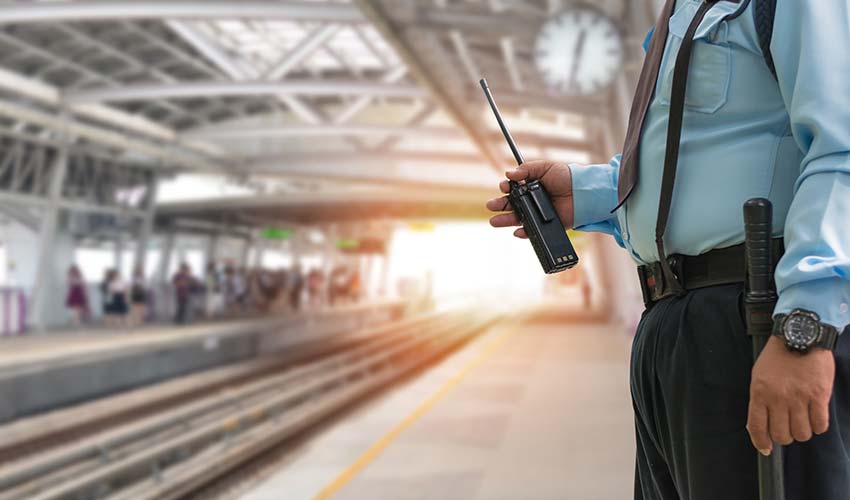
Distributed Antenna System (DAS) and Bidirectional Amplifiers (BDA)
Northwest Communications installs and services Distributed Antenna System (DAS) and Bidirectional Amplifiers (BDA) involves the use of several antennas as opposed to one antenna to provide wireless coverage to the same area but with reduced total power and additional reliability.
Often times a DAS uses RF directional couplers and/or wireless amplifiers to split and amplify the wireless signal from the source out to the distributed antennas. In many cases a DAS will use a combination of low loss coaxial cabling as well as fiber optic cabling supporting radio over fiber (RoF) technology to distribute the wireless signals to the antennas.
A Distributed Antenna System can be designed for use indoors or outdoors and can be used to provide wireless coverage to hotels, subways, airports, hospitals, businesses, roadway tunnels etc. The wireless services typically provided by a DAS include PCS, cellular, Wi-Fi, police, fire, and emergency services.
Our systems address problems and ease frustrations, from the largest spaces to the smallest. In fact, despite the existing perception that DAS is only for large arenas and other similarly-sized spaces, 90 percent of DAS solutions in use today actually appear in smaller spaces, such as office buildings, residential buildings, and even small retail.
We offer Cellular Enhancement / Public Safety from the following:
- Powerwave
- GWave
- Spotwave
- Harris
- Commscope
- Corning
- Wilson
- WeBoost
- SureCall
We offer systems that work on Cellular and the following public safety systems: Lake County Indiana 700Mhz, Starcom, Hoosier Safety, and other various 700Mhz public safety systems.
Components Of Active Distributed Antenna Systems
Signal Sources
As powerful as an active DAS is, the system itself is incapable of producing a standalone signal. These signals are fed from sources such as a service provider feed, Node-Bs, and the modern favorite – small cells. These signal sources reside in the head-end equipment room. Multiple service providers can provide their respective signal feed making it a multi-carrier active distributed antenna system. Only major service providers can provide the feed such as AT&T Wireless, Verizon Wireless, Sprint, T-Mobile, etc. in the USA. MVNO’s or Mobile Virtual Network Operators would not provide such a signal feed themselves – They would need permission from the main service carriers such as those mentioned above. In Canada, those would be Rogers Wireless network companies, Telus Mobility network companies, Bell Mobility network companies, and Freedom Mobile network companies, etc.
POI Tray
Stationed between the signal sources and the head-end unit, the POI tray combines the RF signals from diverse RF sources before it is delivered to the head-end equipment. These signals differ in nature and their abrupt and direct combination at the head-end unit can result in diversity imbalance. Of course, the same can also be achieved by using standalone hybrid combiners, which is the traditional way. But the POI does more.The downlink signal from RF sources is usually powered at 40 W which is much higher than the average head-end unit can handle. The POI tray configurations attenuate these downlink signals before they are delivered to the head-end unit, thereby preventing excessive power-loss and heating.
Head-End Unit
In addition to the signal sources, the head-end equipment room houses the head-end unit. On one side, band-specific units called RF modules connect the head-end unit to corresponding uplink and downlink port-pairs on the POI via coaxial cables. These RF modules provide further signal filtration and amplification based on the signal frequencies. Similarly, a series of uplink-downlink port pairs, one for each radio unit, are present on the other end to facilitate zone-wise signal distribution. Needless to say, the head-end equipment room houses some of the most critical components of an Active DAS. Not only should it be large enough to house the electronic components, but it should also be well-equipped to handle their excessive heating and impart cooling thereafter.
Radio Units
Active DAS radio units receive signals from the head-end unit, segregate them based on frequencies, amplify them, and then transmit them to the nearby regions through antennas. These antennas is either mounted on the top of the radio-unit directly or connected to an RF-port. The reverse of this process is carried out in uplink direction. Depending on the transmission power and number of different frequencies supported, different types of radio units are deployed in an active DAS. Radio units are powered by AC or DC supply.
Fiber Optic Cables
Distributed antenna systems cannot be complete without connecting all components with fiber-optic cables. Thin, flexible, and light-weight, fiber optic cables are perfect for an Active DAS. They don’t take up much space and can easily dwell in even the smallest nooks and crannies. Since the optic signal attenuation in fiber optic cables is low, it grants the freedom to place radio units at a considerable distance from the head-end unit without causing signal loss or loss of signal Gain achieved from signal sources such as a service carrier feed. Depending on the type of signal to be transmitted, Single-Mode (SM) or Multi-Mode (MM) fiber optic cables can be used.
